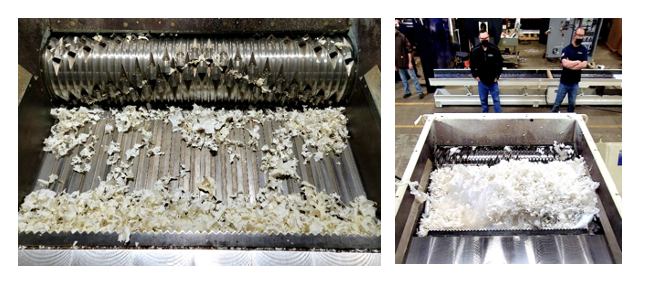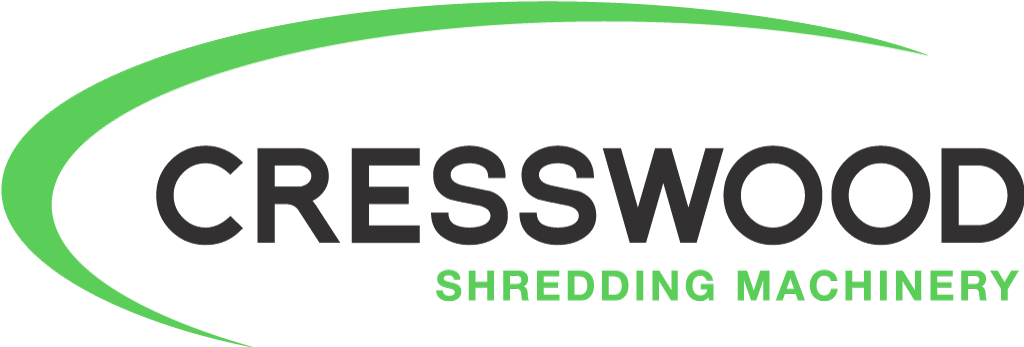Cresswood is committed to zero waste and protecting our natural resources by providing innovative and USA-made shredding and recycling equipment.
For more than 30 years, in collaboration with our industrial customers, we engineer and manufacture shredding equipment that reduces waste and protects our environment. Not only do we protect the environment, but we also lower the total cost of equipment ownership, and increase the efficiency and effectiveness of recycling wood, plastic, and paper for our customers. We even use our own hopper-fed XR600-100 machine at our Cortland facility exclusively for the testing and processing of our client’s materials.
With the world’s increasing need for innovative plastic recycling solutions, Cresswood has renewed its commitment to improving our technology for these materials, particularly in regard to plastic films. Film is a notoriously difficult type of material for size reduction, and we recognized early on that our success in film applications called for an entirely new type of shredding technology, starting with the design of the rotor.
After running extensive internal trials with sample film materials, we discovered that the typical rotor configuration we’ve developed for success in wood or current plastic applications did not perform to expectations when high percentages of film were introduced. Mark Anderson, VP of Engineering at Cresswood, set out to design a new rotor configuration that would be capable of processing large volumes of plastic film. According to Mark, the essential factors to consider “were combining a unique row geometry with much tighter tooling clearances”.
In designing the new film rotor, the more vertically-oriented rows of the traditional rotor design for rigid plastics were essentially flattened out along the length of the rotor, creating a symmetric wave-like pattern. Mark created multiple offset pairs of these wave-shaped rows. This design alteration helped to create a more effective shearing dynamic and more efficient size reduction with stretchy LDPE film materials.

Next, the new design rotor needed to be fabricated and mounted into the drive train of the test XR600-100 machine. Our talented fabricators and machinists produced the new film cutterhead based on the developed SolidWorks model.

The new cutterhead was then integrated into the demo machine and tested with sample film materials. During the testing, the tooling clearances were “dialed in” to create ideal performance characteristics with straight film processing.
Further design work then went into creating a new anvil design that would make adjusting and maintaining the tooling clearances as practical and user-friendly as possible. Mark based the design from the foundation of the traditional inclined anvil Cresswood deploys in all rigid plastic and paper applications. New features were added so the anvils could be easily adjusted by jack screws on the die-support edge of the tooling. This precision adjustment brings the anvil into tighter proximity to the mating tooth pattern on the cutterhead, and allows the setup person to quickly maintain tight clearances in operation for efficient processing. Serrations were also added to the inclined plane of the tooth profile to give the anvil more gripping characteristics on slippery film laminations.

A second round of testing was then done after the new anvils had been machined and heat treated. This testing was the final validation of the concept and design investments we had made. This also allowed us to provide our sales team with the output characteristics of the new design so they could consult the best solutions for our potential client’s needs. Innovation is truly a team sport, and Cresswood’s solid culture of teamwork allows us to quickly develop new technologies that leverage everyone’s insights and experiences.


Recent Comments